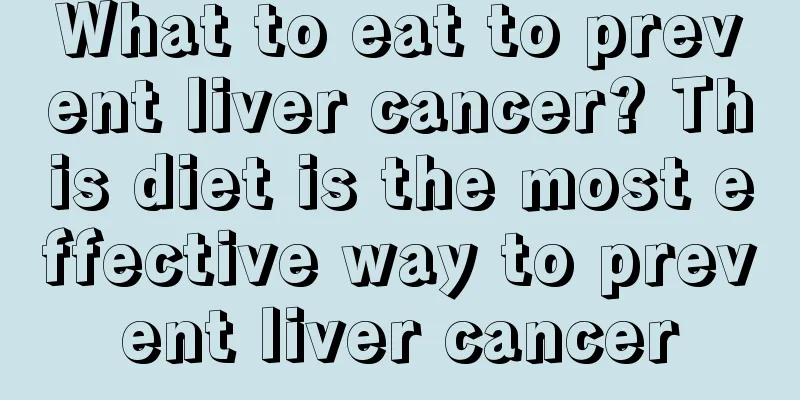Brief analysis of surgical treatment methods for pancreatic cancer

|
Many people may not know much about pancreatic cancer, but it is actually a very serious malignant tumor of the digestive tract. What are the methods for treating pancreatic cancer ? The following is an introduction to surgical treatment of pancreatic cancer. Generally, surgical treatments for pancreatic cancer include: 1. Duodenectomy Pylorus-preserving pancreaticoduodenectomy The main conditions for performing pylorus-preserving pancreatoduodenectomy to treat pancreatic cancer are: ① The lesion has not yet invaded the pylorus and duodenal bulb. ② There is no pyloric lymph node metastasis. In addition, pylorus-preserving pancreatoduodenectomy can also be performed for pancreatic head tumors with low malignancy (cystadenocarcinoma, islet cell carcinoma, acinar cell carcinoma, etc.). 2. Pancreatic cancer surgery combined with vascular resection In the past, it was believed that tumor invasion of the portal vein and superior mesenteric vein system was a contraindication to surgical resection, and therefore the surgical resection rate was relatively low. In the past 20 years, with the strengthening of preoperative and postoperative treatment and the improvement of surgical operation technology, tumor invasion of the portal vein system is no longer a contraindication to surgical resection. This method of treating pancreatic cancer has significantly improved the surgical resection rate of pancreatic cancer or periampullary cancer. 3. Tail pancreatectomy Tail pancreatectomy is a commonly used method for treating pancreatic cancer and is suitable for pancreatic tail cancer without distant metastasis. 4. Total pancreatectomy Patients with pancreatic head cancer who are under 65 years old and whose surgical exploration shows that the lesion is stage I or II (without lymph node metastasis) can undergo total pancreatectomy to treat pancreatic cancer. 5. Surgical treatment of unresectable pancreatic cancer (1) Biliary drainage ① External drainage for biliary obstruction For the elderly, the weak, those with hypoproteinemia, biliary infection, or those with poor liver and kidney function who cannot tolerate internal biliary drainage, external drainage through bile duct or cholecystostomy can be performed. The operation is simple and has few complications. ② Cholecystoduodenal anastomosis: This operation has the advantages of simple operation, less trauma, and fewer surgical complications. However, ascending infection is prone to occur after the operation, so it is rarely used in clinical practice. ③Cholecystectomy or bile duct jejunostomy is a frequently used procedure in clinical practice. As long as the patient is in good physical condition and is estimated to be able to tolerate the procedure, cholecystectomy or bile duct jejunostomy should be listed as the first procedure. (2) Gastrojejunostomy is suitable for cases with duodenal obstruction. Gastrojejunostomy should be performed in the following clinical situations: ① Symptoms or signs of duodenal obstruction. ② Gastrointestinal X-ray fluoroscopy or endoscopic examination shows stenosis, stiffness, and tumor infiltration in the duodenum. ③During the operation, the duodenum was found to be narrowed and compressed. (3) Choledochojejunostomy and gastrointestinal anastomosis are suitable for patients with pancreatic cancer complicated with obstructive jaundice and duodenal obstruction. ① The advantage of choledochojejunostomy and gastrointestinal loop anastomosis is that the operation is very simple. Choledochojejunostomy and gastrointestinal loop anastomosis can be performed in one stage. It is also suitable for patients who undergo choledochojejunostomy for the first time and need to undergo another operation after duodenal obstruction. ② Roux-Y cholecystoenterostomy and gastrointestinal anastomosis is suitable for pancreatic cancer combined with obstructive jaundice and duodenal obstruction in any part. The operation is slightly more complicated than loop anastomosis. The above is an introduction to the treatment of pancreatic cancer. I believe everyone has a certain understanding of the treatment of pancreatic cancer. Once you have pancreatic cancer, you must go to the hospital for treatment in time to avoid delaying the disease. For more information, please visit the pancreatic cancer disease special topic at http://www..com.cn/zhongliu/yxa/ or consult an expert for free. The expert will then give a detailed answer based on the patient's specific situation. |
<<: Explain the clinical manifestations of pancreatic cancer
>>: Revealed: What causes pancreatic cancer
Recommend
Causes of prostate cancer
A good body means a healthy life. Now many diseas...
What should you pay attention to in your daily life with renal hamartoma
Although renal hamartoma disease is not very seri...
What to do if you have rib pain due to coughing
If you run without warming up, you will often exp...
Explain to you the factors related to the causes of esophageal cancer
Esophageal cancer is a tumor disease that serious...
How can adults supplement vitamins effectively?
When our body is deficient in nutrition, there wi...
Will ovarian tumor affect menstruation?
Ovarian cysts are the most common gynecological t...
Can allergic rhinitis cause asthma?
Allergic rhinitis is a common disease in daily li...
Is the stool dark green, black and sticky?
The human body's stool can reflect whether th...
Health care after suffering from breast cancer
Breast cancer is very common in today's life,...
What are the clinical manifestations of prostate cancer?
Prostate cancer is the most common malignant tumo...
What are the tips for preserving pine nuts?
Pine nuts are small and exquisite, and they smell...
How is esophageal cancer transmitted
Although the root cause of esophageal cancer cann...
Is bile duct cancer serious?
Is bile duct cancer serious? This is a question t...
How to effectively treat gastric mucosal congestion
For congestion of the gastric mucosa, patients ne...
Which crystals have anti-inflammatory effects
Crystal is a dreamy ornament for everyone. There ...









